Here, we explain the most typical types of customer service with pros and cons to help you decide which one will work best for your company.
Regardless of how big or small your company is, only the caliber of the experiences and services you offer can ensure its long-term survival and success. While it appears straightforward on the surface, reality reveals a different side of this theory.
Which kind of customer service is ideal for which group of customers is one of the most frequent and difficult problems businesses today face. A one-size-fits-all strategy can be disastrous and result in the loss of devoted customers who have specific preferences.
Fortunately, there are now a variety of customer service models available that you can use to guarantee that every customer has a positive experience.
The 10 common types of customer service will be discussed in this blog. We will also discuss their pros and cons in detail so that you can reach your customers on the channels they love the most.
Traditional Walk-in Customer Service

When consumers wanted to request a refund, return a product, or lodge a complaint, they used to have to go to the customer service area of a brick-and-mortar store. Even now, this pattern is present.
Some people still prefer the traditional ways despite how digitalized life becomes.
Customer comfort and confidence regarding a purchase or the associated services are increased through face-to-face interactions. Additionally, it provides your staff with the chance to engage in lengthy conversations and pick up on subtle verbal and nonverbal cues that can help them better understand the needs of customers.
While walk-in customer service is unquestionably better in terms of quality, it can also be more time-consuming and occasionally even put you in risky situations when you have to deal with irate customers.
Pros
- Gain both verbal and non-verbal cues to figure out where the conversation is going
- Understand customer needs better through real-time feedback
- Establish strong bonds with customers with meaningful conversations
- Easily cross-sell and up-sell products
- Win customer trust and confidence
Cons
- Creating a separate customer service section in your store can be expensive
- Providing 24×7 service is not possible
- It lacks the convenience that other online platforms offer
Phone Support

Despite the rise of numerous other online platforms, phone support remains one of the most popular forms of customer service.
When the issue is complicated, about 40% of customers favor speaking with a live person on the phone. The majority of the time, customers start the conversation on chat, social media, or email but end up moving it to a phone call for better support.
What, though, makes phone support so beneficial?
the comforting human voice that no other online support channel can match. Agents are able to listen to customer issues, determine their voice tone and emotions, and respond appropriately.
Strong, lifelong customer relationships can be developed by promptly responding to customer concerns while also actively listening to them.
It’s important to note that while a traditional phone support system is excellent and generally the best option, some businesses prefer providing phone support through a VoIP phone service because it offers more features than a traditional phone system while still being less expensive.
These features include caller ID, call forwarding, call management, voicemail, call waiting, conferencing, video calls, and more. However, choosing to participate in this is typically a choice unique to each business, and there is no universally applicable answer.
Pros
- Boost Your First Contact Resolution (FCR) rate
- Personalize the experience to a customer’s unique needs
- Natural, real-time conversations
Cons
- Setting up a contact center is a costly affair
- Long call cold time can ruin the customer experience
- International calls can be expensive for customers
- Handling multiple calls simultaneously is not possible for agents
Self-Service Customer Support
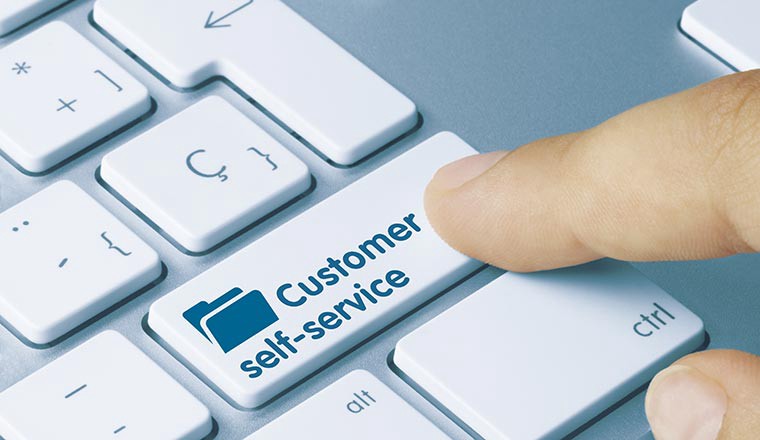
Customers of today expect to have everything at their fingertips. Courtesy of the ‘Click and Get’ culture, customers are becoming increasingly impatient. When there is a brief delay of a few minutes, customers may become irritated or, worse yet, completely give up on your brand.
One of the best customer service options for today’s consumers, who only want convenience, is self-service knowledge base software. It assists them in locating the appropriate responses to their inquiries at any time, day or night, and from anywhere in the world.
61% of customers today prefer to handle issues on their own. It gives customers quick access to the information they need to understand a product better and take care of issues on their own while also empowering them to feel in control.
Although it is a reasonably priced and incredibly useful form of online customer service, it needs ongoing upkeep in terms of design, SEO, and content quality.
Pros
- 24×7 access to reliable information
- Anytime, anywhere seamless support
- Assist both customers and agents
- Decrease support tickets and cost
- It can be translated into multiple languages for a diverse customer base
Cons
- Requires regular maintenance of content quality and relevance
- Practically not possible to include all customer problems in the knowledge base
- A knowledge base with incomplete information can feel frustrating to customers
- Information search can be difficult at times
Email Customer Service
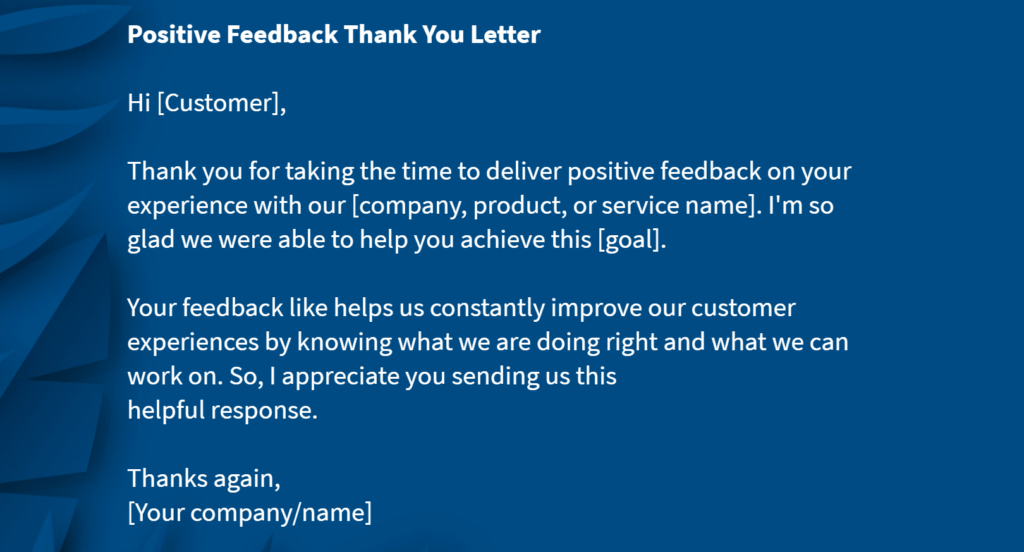
Since the first email was sent electronically in 1971, we have come a long way, with billions of emails being sent and received every day.
Customers believe email to be a more reliable and expert channel of communication than other available forms of customer service. It makes sense that 12% of customers still register their requests via email.
The best thing about email customer service is how affordable it is. Your agents have more time to reply, and they are able to send out quicker emails by using canned responses.
One significant issue with email customer service is that, over time, it gets challenging to keep track of every single email. In this situation, you can use customer email management software to turn emails into tickets and make sure they never fall through the cracks.
Pros
- Record and document customer conversations over a period of time
- Add a professional touch to your customer service using email signatures
- Automated email notifications can be used to update customers about the status of their issue or support ticket
- Easily attach relevant images, videos, docs, or other files
Cons
- Delayed email responses can make customers feel frustrated
- Keeping track of emails can get challenging when you receive hundreds of them every day
- Typing long replies can be time-consuming
- Lack of real-time human-to-human interaction
Chatbot Customer Service
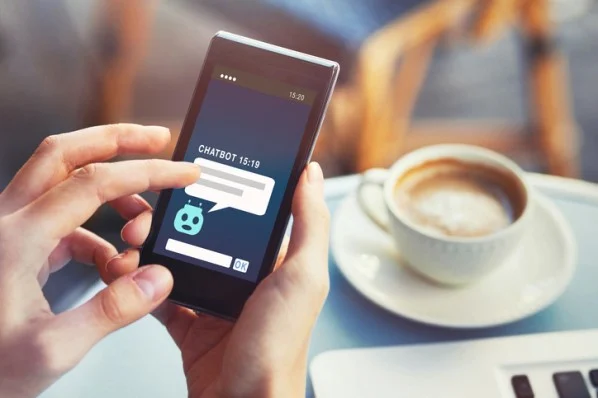
People frequently interact with chatbots while doing their online shopping or placing a food order to get answers to their simple questions. For example, when a customer types the question “where is my food?” the bot shares the live update and helps the customer instantly.
Using chatbots to automate customer service is a fantastic way to delight customers. Around 67% of global customers have interacted with a chatbot to get customer support over the past 12 months.
Now, it’s crucial to understand that if a chatbot is unable to resolve a customer issue, it’s not the end of the world. In fact, if the customer requires additional help, bots can be used to direct customer chats to the appropriate teams or agents.
Chatbot conversations lack a human touch, despite their popularity and cost-saving advantages.
Pros
- Be available to customers even when your team is offline
- Schedule meetings with customer service or sales teams
- Send out links to pertinent videos, articles, and other resources on autopilot.
- Improve your chatbot function over time by adding more questions and answers
Cons
- Chatbots can offer only limited responses to customers
- Robotic responses can frustrate customers and force them to speak with an agent
- AI-powered chatbots can be expensive for your business
- Chatbot conversations often lack empathy and personalization
Social Media Customer Service
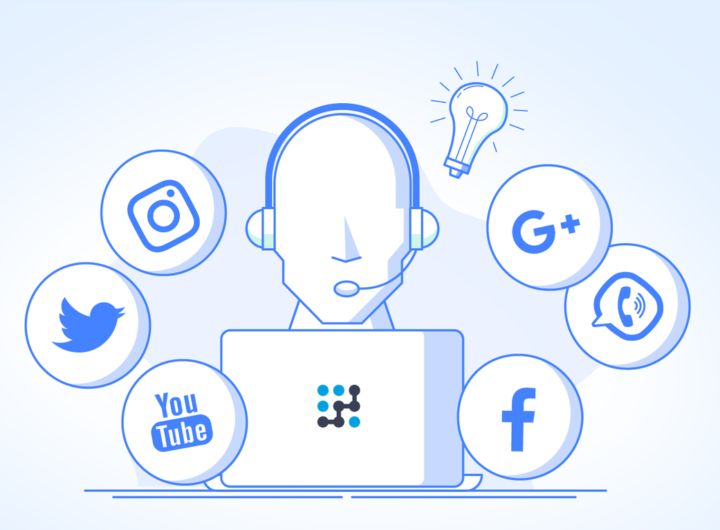
The social interactions between friends and family on social media are no longer its only use. A single tweet has the potential to ruin a brand’s reputation today, so every company needs to have a solid social media strategy.
Customers’ demands for customer support on social media are soaring. 20% of US customers expect a prompt response to any questions or grievances they may have on social media.
Because of this, it will be even harder for your company to live up to customer expectations. You can reach customers in time, though, if you keep a close eye on messages, posts, comments, and group discussions.
You can demonstrate to prospective clients how much you care about them by promptly helping them.
Pros
- Customers can reach you right from their most-used social media apps
- Share proactive messages to update customers about downtime
- Allow customers to help each other by creating help or community pages
- Share customer service success stories and enhance brand reputation
Cons
- Negative customer reviews or comments can impact brand reputation
- For large businesses, it becomes difficult to track every single social media mention
- In most cases, the solution has to be shared on another channel
- Customers can share tweets or posts at any time of the day, even when your team is not available
Live Chat Customer Service
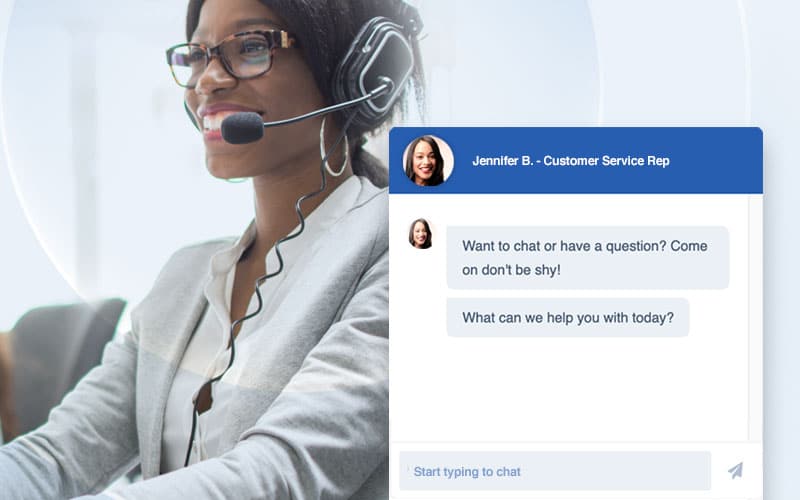
However, live chat support has a distinct advantage over other forms of customer service. Customer service can be proactive thanks to it. It implies that you can provide assistance before clients ask for it.
Customers’ perception of the effort needed to complete a task is diminished when companies take the initiative to communicate with them, which also boosts engagement.
According to the Live Chat Benchmark 2020 report, live chat has an extremely high satisfaction rate of up to 89% (depending on the industry) due to its distinct advantages over phone and email channels.
Speed, convenience, and many other live chat benefits boost satisfaction and conversion by a whooping rate of 20%! Additionally, the rate increases when it is mobile device optimized.
Pros
- High efficiency at a reduced cost
- Supports handling several customers at a time
- Canned responses to automate repetitive replies
- Saves web chat conversation history
- Proactive customer service
- File transfer
- Integration with various third-party apps
Cons
- Older demographics struggle with it
- High expectations for first response time (46 seconds)
- Some chat widgets are not optimized for mobile devices
In-person Customer Service

Even though more customers are shopping online than ever before, good customer service connects the in-store and online shopping experiences. By providing Click and Collect services, you can connect them.
Since the outbreak of the 2020 pandemic, there have been more options for curbside service; in May of that year, online orders for in-store pickup rose by 554%. Customers will benefit from this convenience.
Outside of retail, such as in the hospitality and food sectors, in-person customer service is also available.
Pros
- Personalized experience
- Cost-effective for merchants
- Easy rollout
- Omnichannel experience
- Natural face-to-face interactions
- Convenient for customers
Cons
- Unavailable outside regular working hours
- High customer expectations
- Consumer travel costs and time
- Needs customer-focused staff
On-Site Customer Service
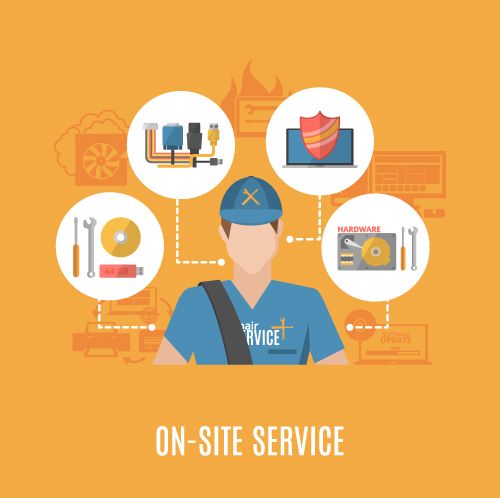
In-home or in-office customer service of this kind is provided to clients. Installation of a product on-site, yearly upkeep or product repairs are examples of on-site customer service activities.
Customers typically pay a high price for on-site support. The hiring of remote professionals, their education, their travel costs, and other issues will be your responsibility. Therefore, most businesses can afford to offer these services only to premium customers and not to standard customers.
But when something goes wrong, some products demand a physician assistant. An IT technician must be on site to fix problems such as server or networking issues.
Pros
- On-site customer service acts as a more convenient option for customers
- Real-time service can lead to better problem resolution
- Serves as the last resort when all other channels have failed
- Customers can check the authenticity of parts being replaced
Cons
- Visiting the customer’s location can prove to be time-consuming
- On-site service is quite expensive and cannot be offered to all customers
- The many facets of customer service, including technical support, etc., that agents must learn.
- Agents can get frustrated due to unpredictable working hours and location
Interactive Voice Response (IVR) Customer Service
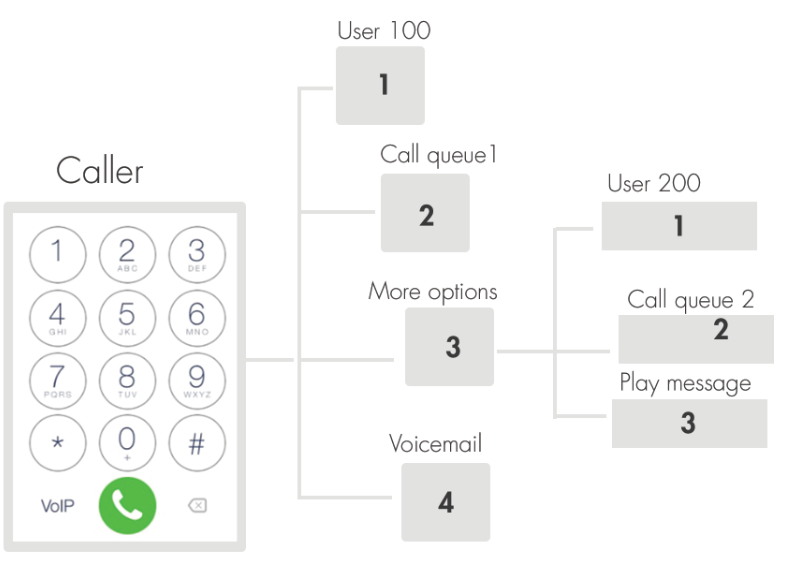
Have you experienced calling an agent and listening to an automated system saying – “Press 1 for XYZ issues”?
Each of us has experienced this. An Interactive Voice Response (IVR) system does just that. Customers who prefer phone support over other channels should call this automated phone system as their first point of contact. Customers who call are presented with an automated menu that guides them to the appropriate option or agent, ensuring a smooth transaction.
Pros
- IVR is available 24/7/365 to assist customers with their queries
- It can make your business appear more professional
- Can improve the call traffic flow by routing customers to relevant agents or teams
- Your agents get the time to focus on more pressing issues
Cons
- Limited IVR options can be frustrating for the customers
- IVR requires a heavy upfront investment
- Complex customer issues cannot be solved using IVR, and only very basic customer queries can be covered
- Frequent changes in the IVR menu can confuse customers
Which Types of Customer Service Should You Choose?
Your brand could succeed or fail depending on the customer service methods you select. Your choice will be influenced by a number of variables, including the target audience’s demographics, interests, financial situation, and the size of the team.
- Popular Channels: Choose the media platforms that your target market prefers. Customers can be asked to rank communication channels according to their preferences in surveys you can share with them about the same.
- Team Size: You can invest in self-service options like a knowledge base, IVR, chatbots, etc. if your team is small and you have a lot of customers to serve. Similarly to this, you can easily use channels like phone or video support if manpower is not an issue.
- Trends: Customer service is an ever-evolving industry. As a result, it’s critical to monitor the various customer service trends that are occurring in your sector. Meeting customer expectations will be made easier as a result.

What is Customer Service?
Customer service refers to the assistance a business provides to its clients. This support starts during the purchasing process and typically lasts after the purchase date. The majority of the time, businesses advise and inform customers about the goods and services they sell during the purchasing process.
It can facilitate informed decision-making for customers. Then, after a customer decides to purchase a good or service, businesses frequently give them support for problem-solving and troubleshooting tools.
For businesses looking to increase brand loyalty and keep their clientele, providing excellent customer service is crucial. Successful businesses foster an atmosphere where clients feel at ease asking customer service representatives for help.
Customers are more likely to return to the same business for future purchases when they feel confident they will get the assistance they require. Customer service is all about fulfilling the promise your brand makes to customers during the purchasing process.
Conclusion: Which One Will You Choose?
All of those customer service options are available for your company. It’s best to combine speed, convenience, personalization, and self-service to create excellent customer service for your brand, assuming you want your business to last as long as possible.
Customers can now get support outside of the phone by emailing, using web chat, texting, or even posting on social media. To assist agents in giving customers the assistance they require, businesses have access to a variety of tools.

